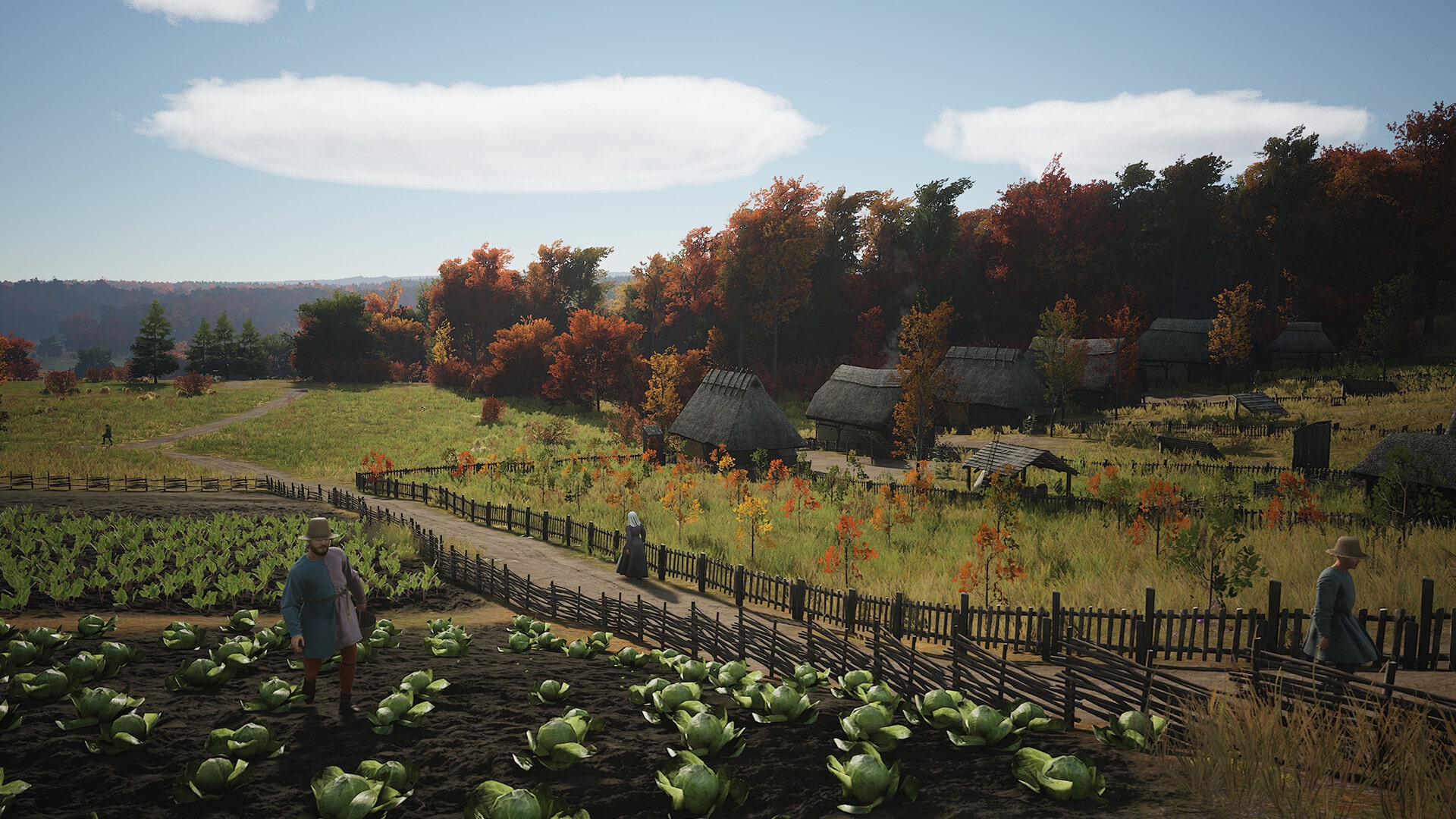
As a gamer diving headfirst into Manor Lords, I’ve found myself smack-dab in the middle of an engaging discussion with fellow players about the optimal marketplace strategy: should we go big with one sprawling emporium or build a network of quaint little shops? This debate delves deep into gameplay mechanics, resource allocation, and the nitty-gritty of managing a burgeoning medieval hamlet. A single marketplace could streamline trade, but there’s a risk it might overlook more remote regions. Conversely, splitting up the marketplace into numerous boutiques brings its own set of challenges in terms of resource management and logistics—a real brainteaser for anyone aiming to become an esteemed noble in this delightful simulator game.
Summary
- The debate centers around efficiency versus management when it comes to marketplace structure.
- Community members provide insight on how structure affects resource distribution and villager satisfaction levels.
- Different gameplay styles can greatly influence the preferred marketplace setup, from sprawling villages to compact towns.
- Players consider important factors like fire risks, resource transport, and accessibility to enhance village growth.
Big Marketplace: The Centralized Concept
One key point supporting the idea of a single, extensive marketplace is its ease of use. A community member suggested that one marketplace would suffice, highlighting how a centralized hub could potentially cater to numerous plots efficiently. By concentrating trade activities in one spot, resources can be collected and distributed smoothly. The availability of goods improves, making it simpler for villagers to obtain their essential items. Yet, there’s a catch: while this single location might work well initially, as the population grows and more resources are demanded, congestion may occur, resulting in some chaos.
The Risk of the Crowded Marketplace
When you put all your assets in one location, it’s not always smooth sailing. A wise player warned us about the risks of fires that could engulf marketplaces: “Having a single large marketplace means fire is a risk.” If a torch goes rogue and sets everything ablaze, your business empire could be reduced to ashes! In such an unpredictable game, over-reliance on a central marketplace might leave you exposed during hard times. If all the stalls catch fire, the loss of resources could bring the entire community to its knees. Instead, having multiple marketplaces could serve as a secret weapon in times of crisis—almost like an insurance policy against fires, ensuring that resources keep flowing even when disaster strikes! In this game of chance, you’re playing with fire, both literally and figuratively!
Multiple Marketplaces: The Decentralized Approach
On the other hand, supporters of numerous smaller marketplaces believe that dispersing them can enhance efficiency and resource management. One user pointed out, “You can control what’s offered in each marketplace, not just at each stall,” emphasizing a crucial difference in product distribution. By establishing multiple smaller markets near important resource centers, players have better control over the availability of goods. This arrangement meets the needs of growing populations while reducing travel times for villagers obtaining essential supplies. Moreover, it could simplify gameplay by allowing you to manage different resources effectively and ensuring accessibility for everyone, resulting in a village that operates smoothly—even if it’s more like an old medieval mechanism than a well-oiled one.
Balancing Proximity and Growth Potential
It’s great to see that the discussion goes beyond mere markets and locations; it encompasses the broader aim of village development altogether. One user humorously suggested, “You want everything within arm’s reach, but remember to keep some space for expansion!” This remark injected a playful tone while highlighting the importance of future-proofing. In managing citizen requirements effectively, striking a balance is essential. The marketplace should be easily accessible, yet the positioning of storage areas and production facilities is equally crucial. A thoughtfully designed layout could lead to optimal growth, avoiding congested market areas and ensuring that your villagers have their needs met at the right time.
Via this back-and-forth debate, the Manor Lords community highlights the diverse ways to engage in gameplay within this simulation. Here, you’ll find a mix of insightful analysis and humorous banter, offering glimpses into the intricate strategies hidden beneath the surface.
As a gamer, I’m all about shaping my very own thriving village in this game. It’s up to me to decide whether I want a massive market hub at the heart of it all for streamlined efficiency, or scattered smaller outlets that offer more adaptability to suit my unique playstyle – essentially, making my Manor Lords experience truly mine.
Read More
- Best Crosshair Codes for Fragpunk
- How to Get Seal of Pilgrim in AI Limit
- Lucky Offense Tier List & Reroll Guide
- Wuthering Waves: How to Unlock the Reyes Ruins
- Enigma Of Sepia Tier List & Reroll Guide
- Are We Actually Witnessing a Crunch Time for ADA? 😲📈
- TenZ rips into Valorant’s “Power Rangers” meta and calls for CS2-inspired changes
- Final Fantasy Pixel Remaster: The Trials of Resurrection and Sleeping Bags
- Why You Might Prefer a $20 Temu Wheel for Sim Racing: A Community Perspective
- Nintendo Switch 2 logo to appear on Seattle Mariners jersey this season
2025-02-13 03:32